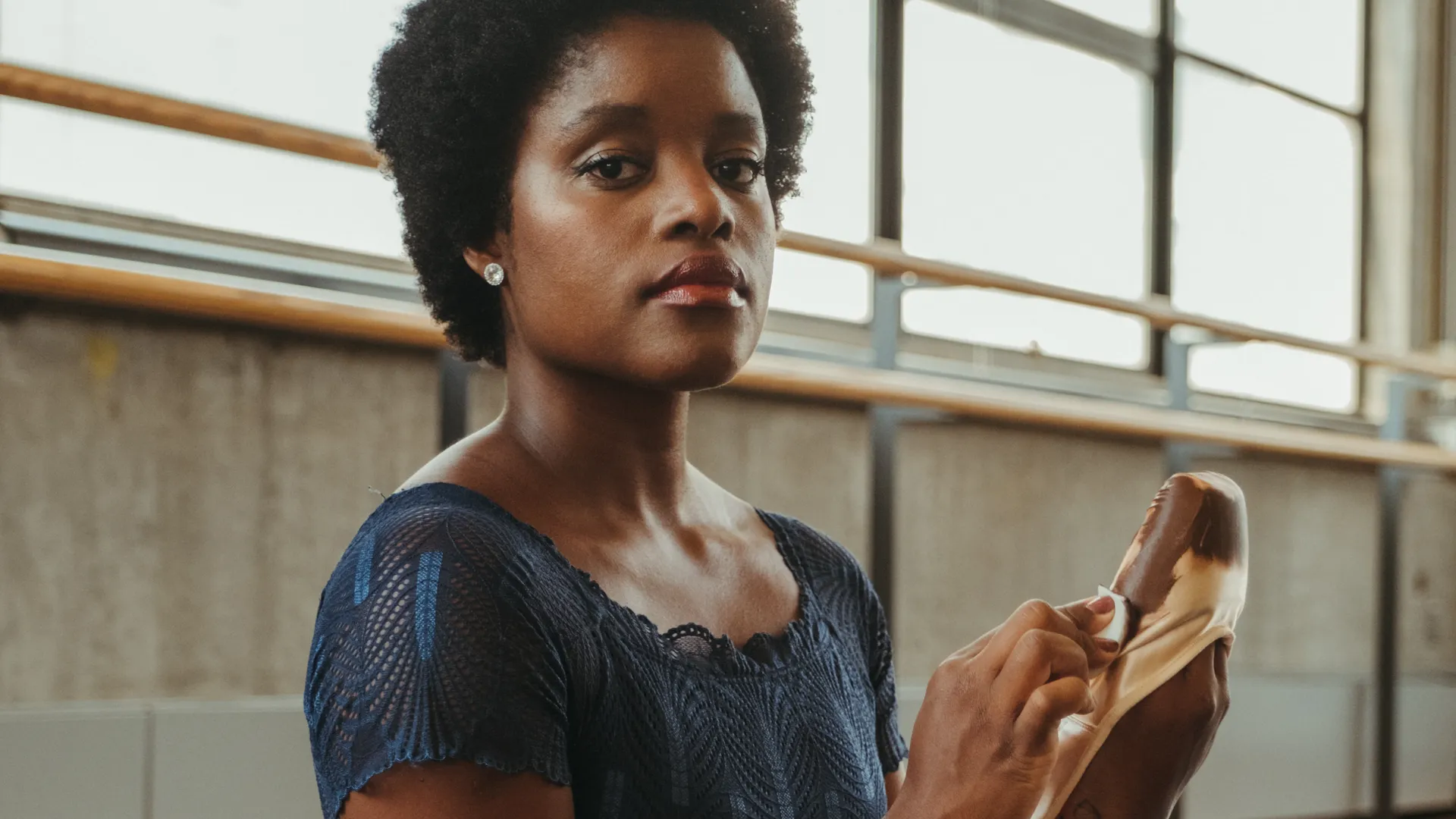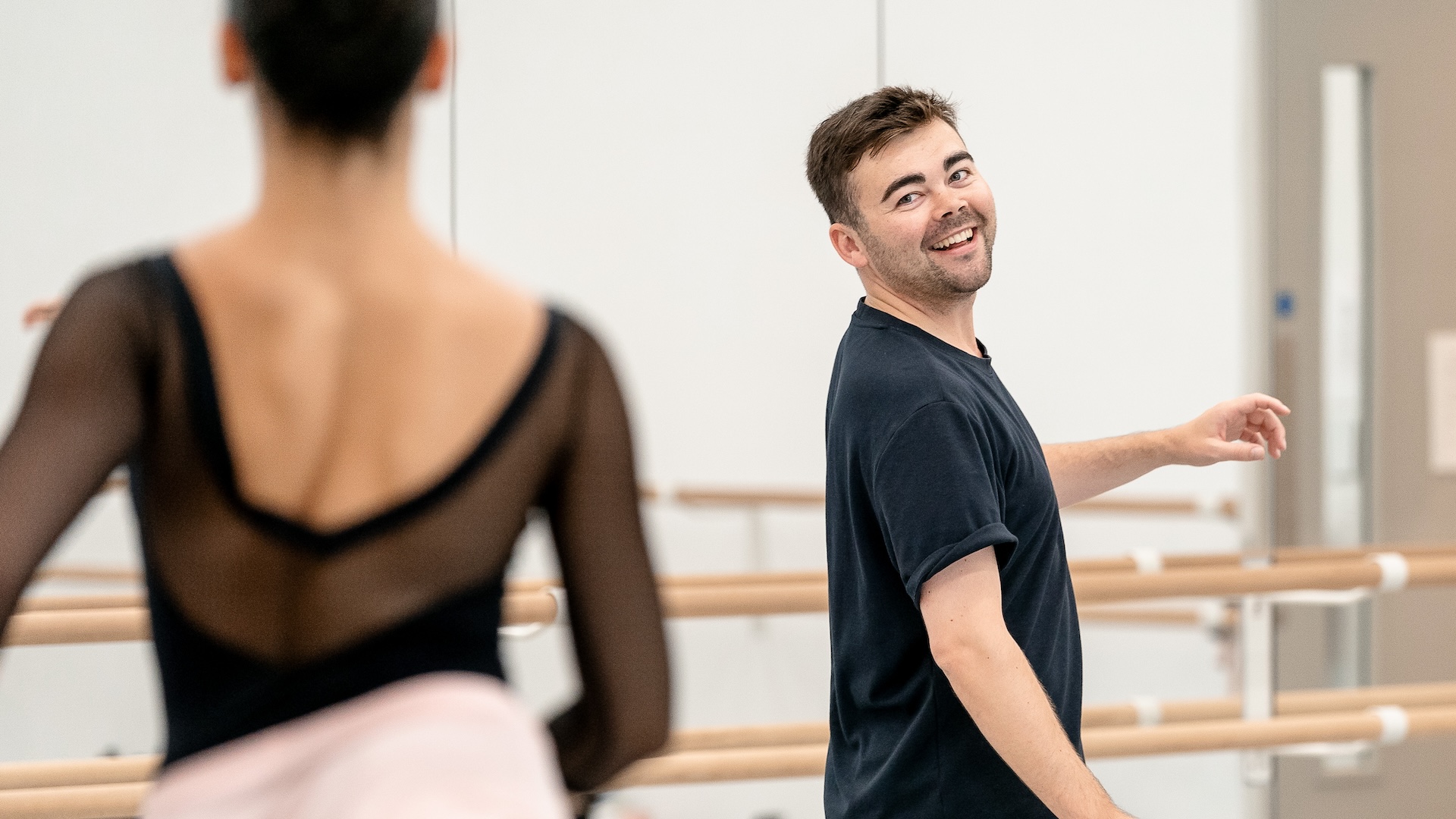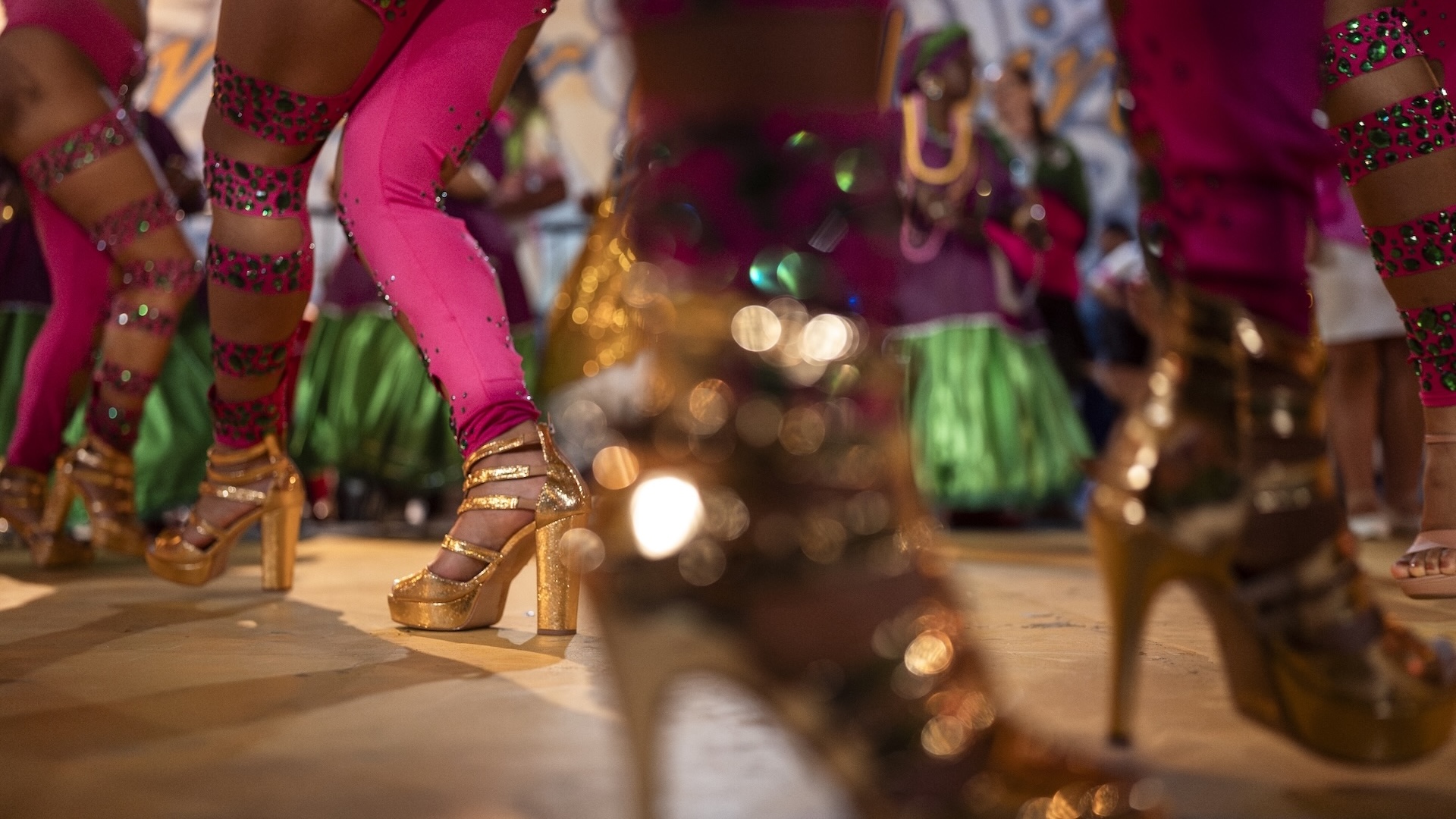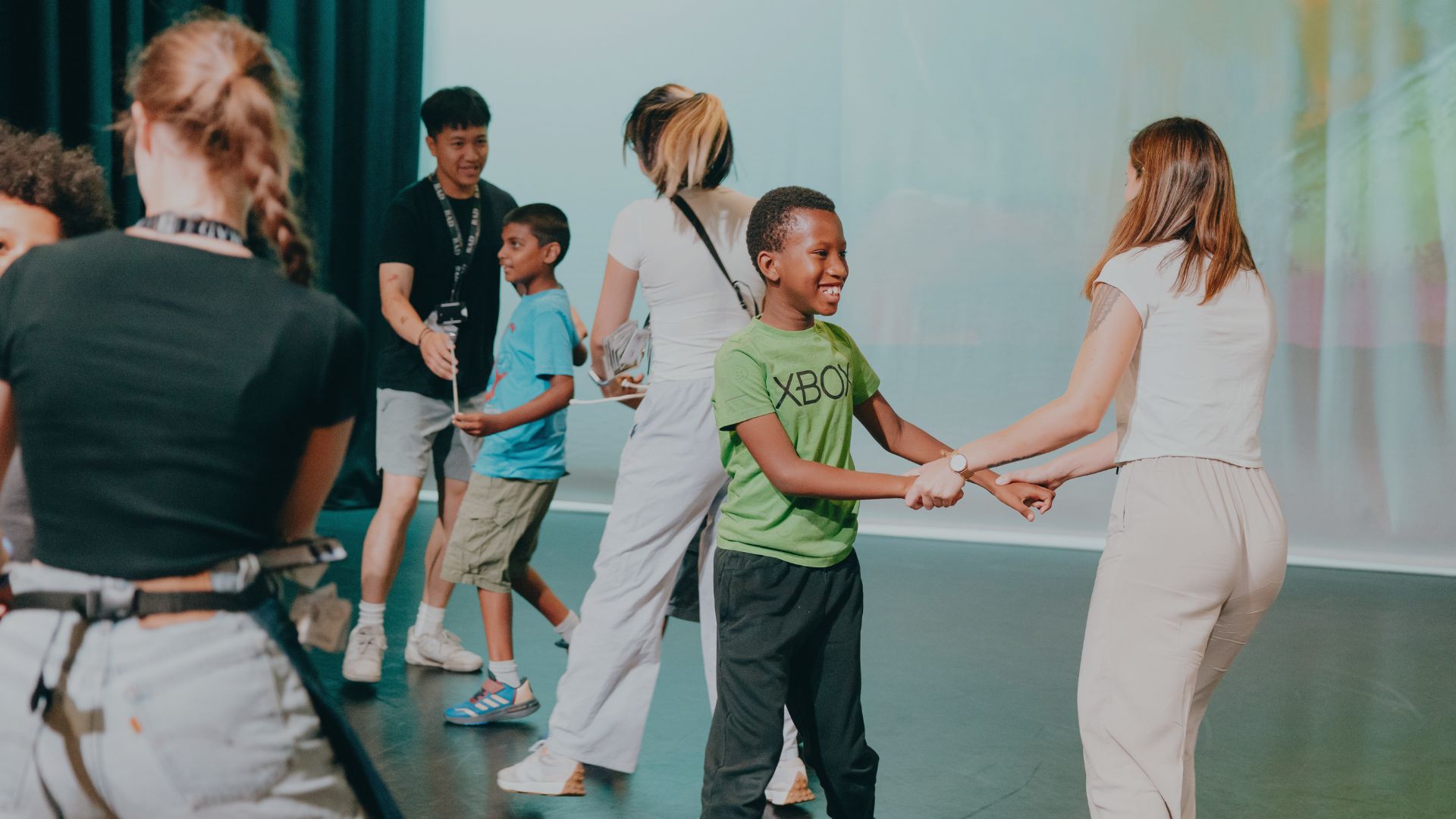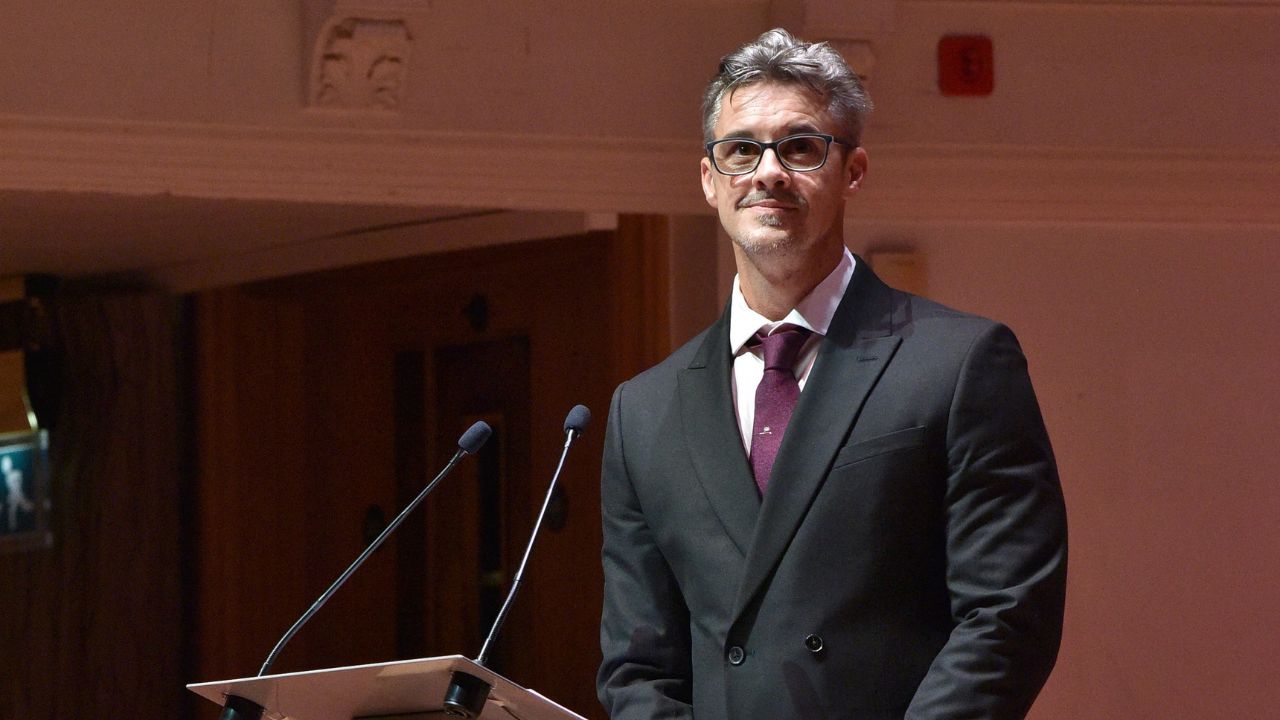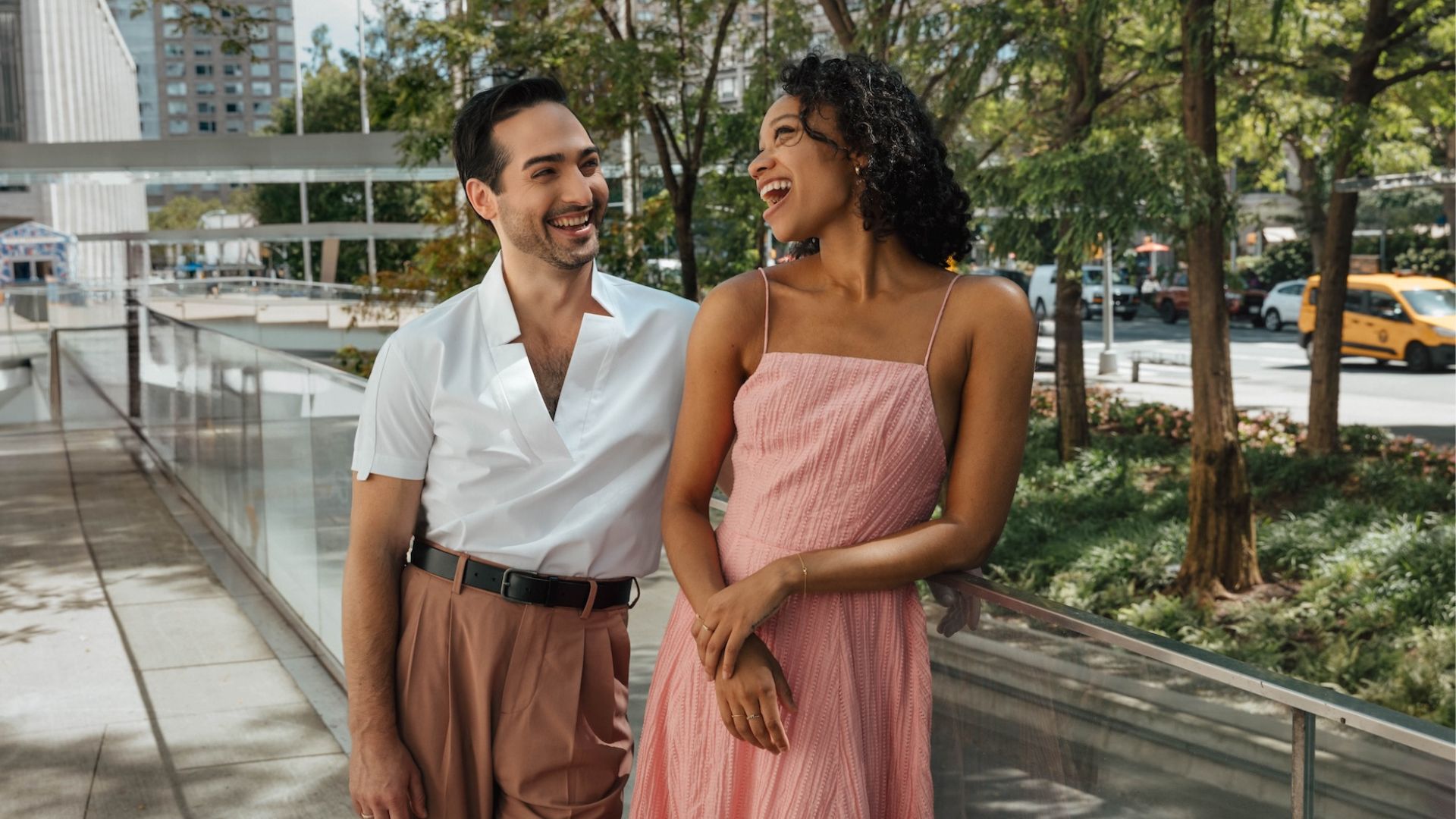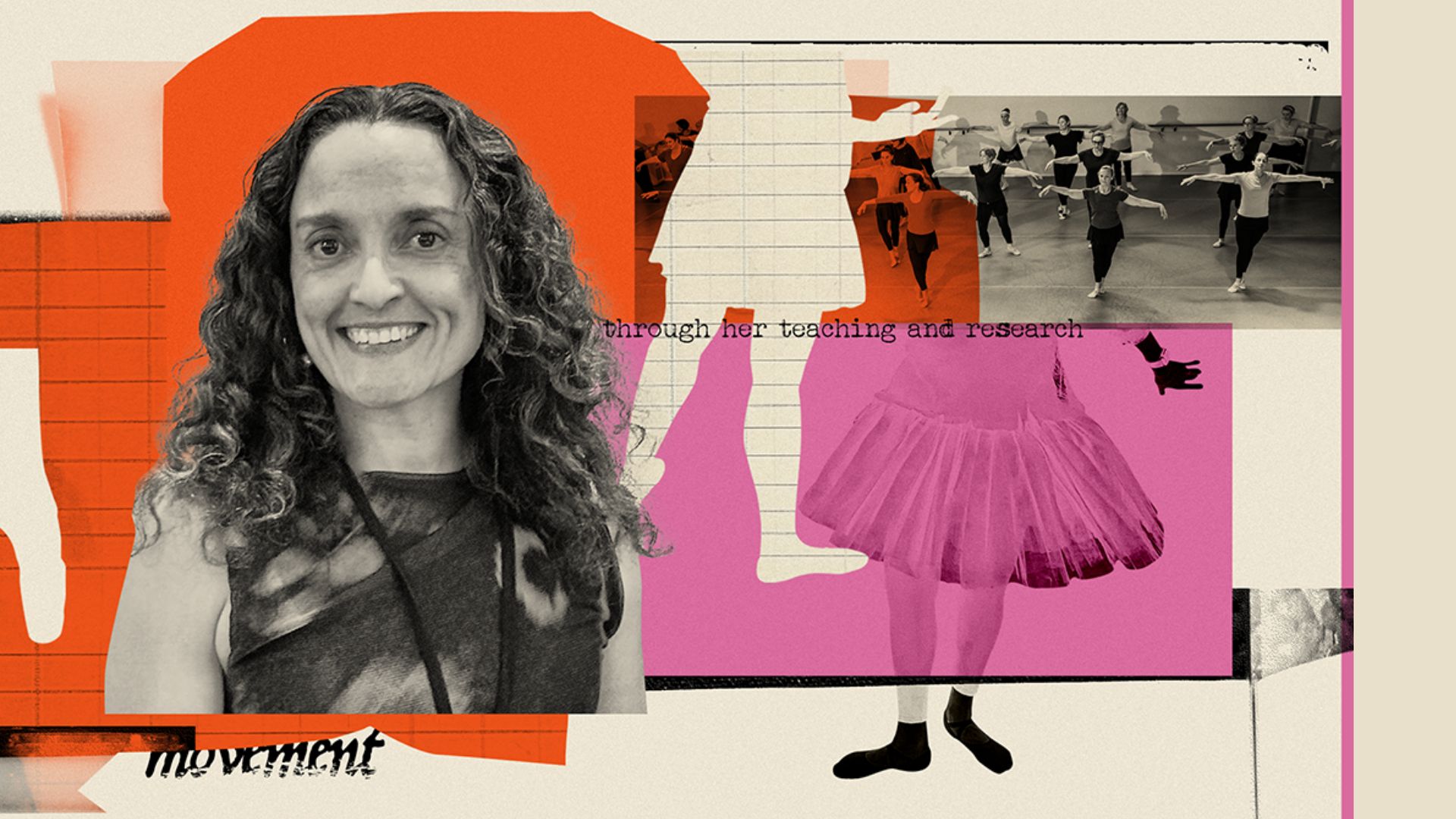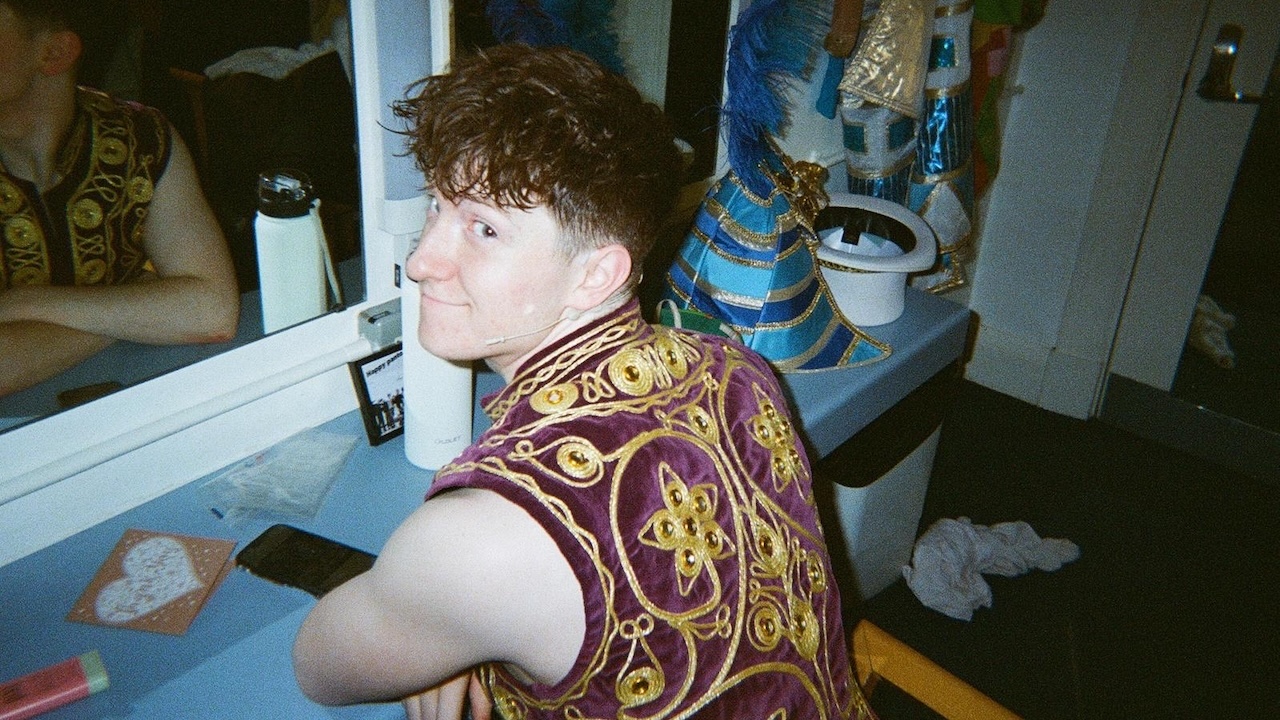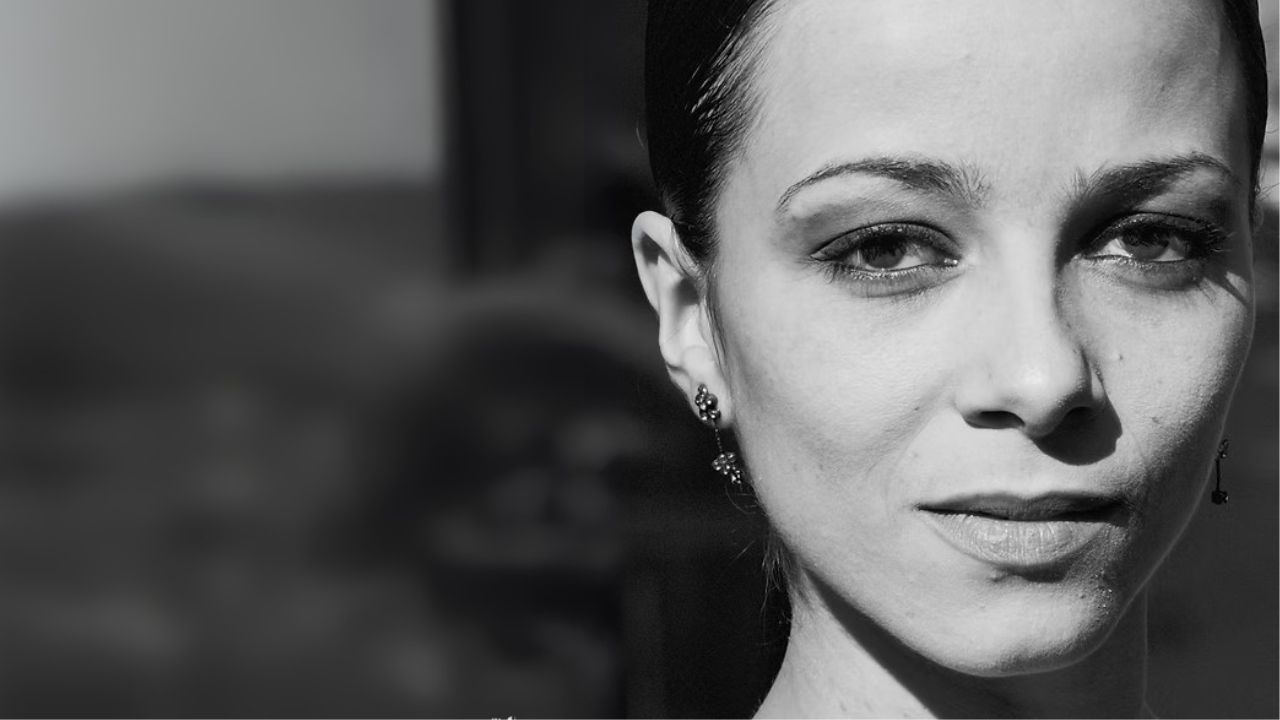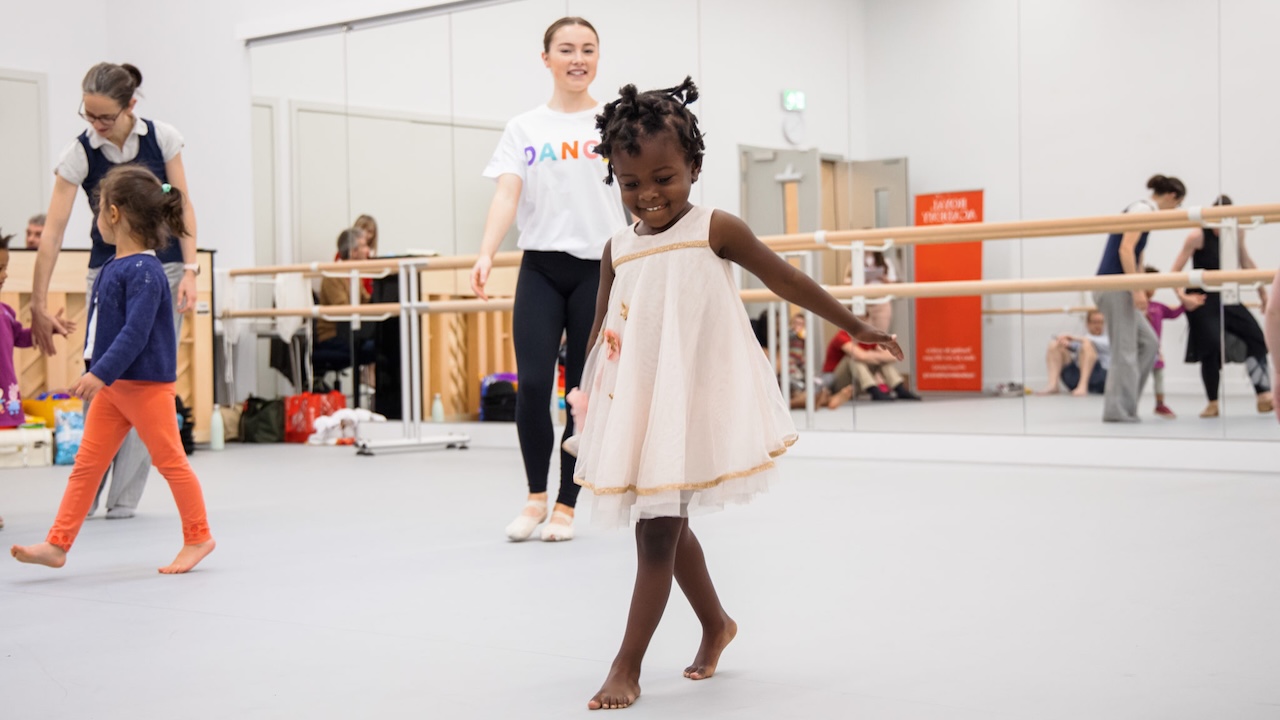Many congratulations on becoming the commissioned choreographer for The Fonteyn. How did you approach the commission?
When Alexander Campbell first asked me to choreograph, my immediate reaction was to say no – I’ve never seen myself as a choreographer. But he was hugely encouraging. He reminded me of my experience judging and participating in competitions, and how that background gave me an understanding of what young dancers need. He also felt that, as a Brazilian, I could bring a special connection to the competition and to the students in Brazil.
His encouragement really gave me the confidence to try, and although it turned out to be not just one solo but two, I felt inspired to take it on. I decided to collaborate with André Mehmari, a Brazilian composer, who kindly offered me two original pieces to choreograph to. Once I had the music, the ideas began to flow. What I needed was that little push, and Alexander provided exactly that.
‘My immediate reaction was to say no to choreographing – I just needed a push’
How will your two solos challenge the dancers and also let them shine?
One of the main challenges in ballet, especially for young students, is learning to convey feeling and storytelling within the technical vocabulary that we spend so many hours training to master. It’s easy to concentrate on executing the steps correctly without always having the time to develop a true sense of purpose that elevates the work.
For the solos Samba Alone and Frevolity, I wanted the movement to be both precise and deeply musical. That’s something I’ve come to value after performing so many Frederick Ashton ballets with the Royal Ballet, where every step is intricately tied to the music. That connection adds a vital layer, guiding both body and mind to interpret the choreography more fully and allowing the audience to connect with the experience we as dancers are having on stage.
In neoclassical work especially, where the essence often lies in the movement itself, music becomes the strongest tool in shaping emotion and atmosphere. I let the score lead me – the highs, the lows and all the subtle details suggested the choreography. Choosing a Brazilian composer made this process feel even more organic, as the rhythm and richness of the music naturally inspired the movement.

When did you realise that dance was what you wanted to do with your life?
I was born in Rio de Janeiro, where I did most of my early training. I had no background in my family of anyone pursuing the arts professionally, let alone leaving the country to dance or perform. The idea of an international career felt very far removed from my upbringing and daily life.
Once I began dancing, my ballet teachers encouraged me to consider a career abroad. That planted the first spark of possibility in my mind, even though I didn’t fully understand what it would mean – to move away, to adapt to another culture and to grow up elsewhere while chasing a dream. In Europe, the opportunities and recognition for ballet are greater than what is currently possible in Brazil, even though Brazil has so much talent and good training.
When I moved to England, everything started to make sense. I joined the Royal Ballet School for a year, and soon after became part of the Royal Ballet, where I’ve now danced for 14 years. Every day, I feel grateful that what began as a hobby I loved has become my career.
You had to leave Brazil for a career at the highest level – have you seen signs of that changing?
Since I left Brazil, I do feel that more has been happening, especially in Rio de Janeiro, where I can speak from direct experience. But, as in any large country, change takes time. Funding for the arts is also very dependent on political cycles, so with each change of government, the level of support can shift. In recent years there have been some difficult periods that slowed the progress of dance.
Twenty years ago, many international companies toured in Brazil – I saw Paris Opéra Ballet and the Mariinsky in Rio de Janeiro. Those strong international influences deeply enriched the local dance scene, but that presence is less consistent now.
The reality is that for ballet companies to thrive, they need stability – both in financial support and in planning seasons that keep dancers trained, inspired and healthy. When everything depends so heavily on fluctuating funding and politics, momentum is lost. I think that’s the main challenge ballet companies in Brazil face today: sustaining consistency so that the art form can continue to evolve and flourish.



‘Competitions taught me discipline and responsibility from a very young age’
Did you enjoy competitions as a young dancer?
Taking part in major competitions such as the Youth America Grand Prix and the Prix de Lausanne was hugely formative for me. They allowed me to see where I stood internationally, to observe other young dancers and learn from the way they challenged themselves technically and artistically. I would always return to my school inspired, setting new goals for myself – whether improving flexibility, refining my turns or pushing my speed and musicality.
For me, these competitions also had a very practical purpose: they offered the chance of scholarships and opportunities to join companies abroad. But beyond that, the preparation itself was invaluable. It taught me discipline, consistency and responsibility from a very young age – not only in training, but also in how I looked after my body, my diet, my rest, even preparing costumes. My mother used to say I was like an adult at home, because I was so focused and aware of what I needed to do.
In many ways, those early goals shaped both my dancing and my character. Competitions gave me motivation, inspiration and a sense of purpose that has stayed with me throughout my career.
You have a wide repertoire – which ballets give you most pleasure?
I’ve come to realise that I’m a bit old-school in terms of what I most enjoy watching and performing. What first drew me to the Royal Ballet was the incredible sense of tradition the company carries. The ballets I truly love most are those of Kenneth MacMillan and Frederick Ashton – the choreographers who shaped the very identity of the company. I adore performing their works because they are endlessly layered. Each time I return to one of these ballets, I discover new connections in the music, the storytelling, and even in how the roles shift depending on the colleagues I’m dancing with.
That deep tradition is at the heart of why I’m so proud to be part of the Royal Ballet – we are custodians of a style and repertoire that has such immense artistic value. At the same time, it’s important for dancers to keep challenging ourselves both physically and artistically. Dance must breathe, evolve, and move forward, and I feel proud to belong to a company that preserves its heritage while also welcoming the future.

Do you have plans for future choreographic projects?
I don’t think I’ve choreographed enough yet to fully know what my choreographic ‘voice’ is. For these two solos, I focused on simplicity and clarity, staying very true to classical ballet vocabulary. The dancers are young students who spend hours training in the studio, so I wanted them to feel confident using what they already know, with just a touch of artistry and musical interpretation added.
I’m not sure if choreography will become a long-term path, but I really enjoyed the challenge and the trust that RAD placed in me. I’m especially excited to see how the competitors bring these solos to life in Brazil, and look forward to judging the final and witnessing their performances. It’s been a wonderful opportunity, and I’m grateful for it.
‘Ballet is like a rabbit hole: the more you learn, the more you want to explore’
Finally, why does dance matter to you?
It began very simply – a little girl’s dream of dancing in a tutu at a big opera house, feeling weightless on stage and being watched as I performed. Over time that dream has grown into something much deeper. I’ve come to realise that ballet is like a rabbit hole: the more you learn, the more you understand, research and collaborate with people who are passionate about this art form, the more you want to keep exploring.
I honestly can’t imagine doing anything else. Even if I stopped dancing tomorrow, I would still want to remain within this world. Ballet has opened so many doors – to the arts, to music, to movement, and to different cultures and how they embrace dance. I’ve also become fascinated by the body itself, how it adapts to movement, how training shapes it and how kinaesthetic awareness fuels performance.
Ballet was the starting point, but it has led me to a much broader passion: for the arts, for expression, for performance, and for the visual world around me. It inspires me every day – not only in my work, but in my life beyond the studio and stage. It’s endlessly fulfilling.
WATCH
Mayara Magri introduces her solos for The Fonteyn


